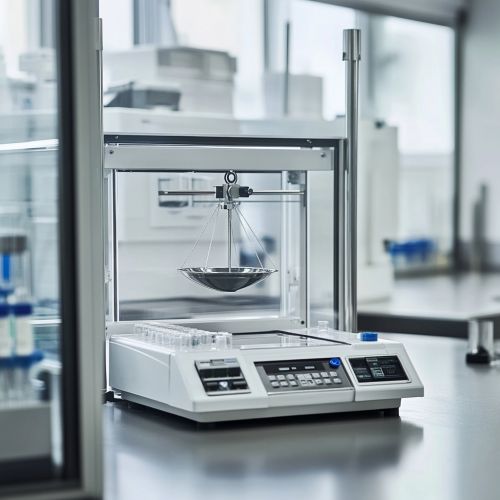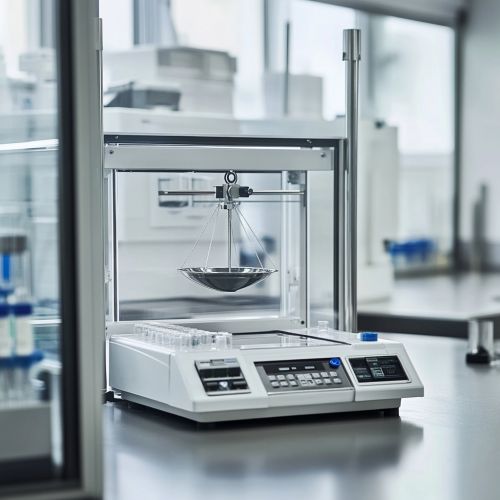Analytical Balance
Analytical Balance
An analytical balance is a highly sensitive laboratory instrument designed to measure mass with a high degree of precision. These balances are essential in scientific research, quality control, and various industrial applications where accurate mass measurement is critical.


History
The development of the analytical balance can be traced back to ancient civilizations, where early forms of balances were used for trade and commerce. However, the modern analytical balance, as we know it today, began to take shape in the 18th and 19th centuries with advancements in precision engineering and materials science.
Design and Components
Analytical balances are characterized by their ability to measure small masses in the sub-milligram range. Key components include:
- **Weighing Pan**: The surface where the sample is placed.
- **Draft Shield**: A transparent enclosure that prevents air currents from affecting the measurement.
- **Load Cell**: A transducer that converts the mass of the sample into an electrical signal.
- **Display**: An electronic interface that shows the mass reading.
The balance is usually housed in a robust frame to minimize vibrations and environmental interferences.
Principle of Operation
The principle of operation for an analytical balance is based on the electromagnetic force restoration method. When a sample is placed on the weighing pan, it causes a displacement. This displacement is detected by a sensor, and an electromagnetic force is applied to restore the pan to its original position. The current required to generate this force is proportional to the mass of the sample and is displayed as the measurement.
Calibration
Calibration is crucial for maintaining the accuracy and precision of an analytical balance. There are two main types of calibration:
- **Internal Calibration**: The balance has an internal weight that it uses to calibrate itself automatically.
- **External Calibration**: Requires the use of certified calibration weights to manually calibrate the balance.
Regular calibration ensures that the balance provides accurate measurements and complies with industry standards.
Types of Analytical Balances
There are several types of analytical balances, each designed for specific applications:
- **Microbalances**: Capable of measuring very small masses, often in the microgram range.
- **Semi-Microbalances**: Measure masses with a readability of 0.01 mg.
- **Ultra-Microbalances**: Provide even higher precision, suitable for applications requiring extreme accuracy.
Applications
Analytical balances are used in various fields:
- **Pharmaceutical Industry**: For precise formulation of drugs.
- **Chemical Laboratories**: For accurate measurement of reagents and compounds.
- **Environmental Analysis**: For measuring pollutants and contaminants.
- **Food Industry**: For quality control and ensuring compliance with standards.
Maintenance and Care
Proper maintenance and care are essential for the longevity and accuracy of an analytical balance. Key practices include:
- **Regular Cleaning**: Keeping the weighing pan and draft shield clean to prevent contamination.
- **Environmental Control**: Placing the balance in a stable environment with minimal vibrations and temperature fluctuations.
- **Routine Calibration**: Performing regular calibrations to ensure accuracy.
Troubleshooting
Common issues with analytical balances include:
- **Drift**: Gradual change in the displayed mass, often due to environmental factors.
- **Non-Linearity**: Inaccurate readings at different points of the scale, requiring recalibration.
- **Hysteresis**: Inconsistent readings when the same mass is measured multiple times.
Future Developments
The future of analytical balances lies in advancements in nanotechnology and automation. These developments aim to enhance precision, reduce human error, and integrate balances with laboratory information management systems (LIMS) for streamlined data handling.
